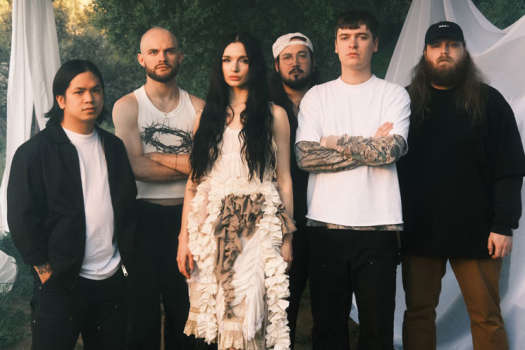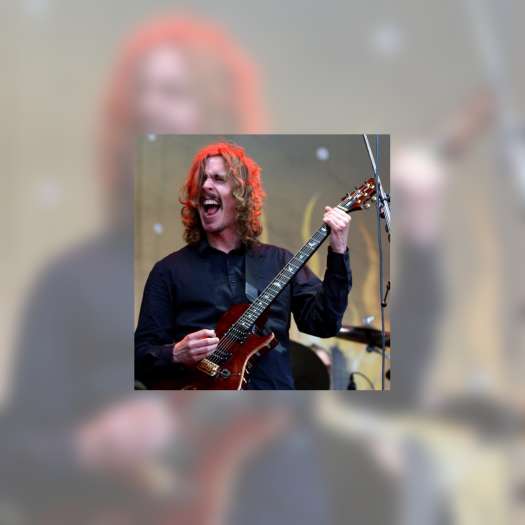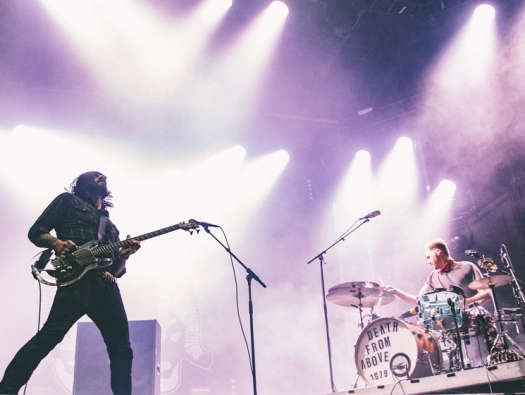Montreal has more than its share of grand streets, each suited to a particular purpose. Ste. Catherine is the everymans consumerist artery of the city. St. Denis is for the upscale shopper. St. Urbain is the residential thoroughfare. St. Laurent is the congested tourist trap in constant flux.
But Parc Avenue is where Montrealers fall in love and where everyone else falls in love with Montreal. Its a wide, green and glorious promenade, a bustling commercial street that people actually live on. It starts downtown, touches the periphery of McGill, offers the citys best view of the mountain, straddles soccer fields and stretches into Mile End, where various ethnicities and the accompanying culinary aromas lay claim to different intersections.
"Its a dynamic place, a quirky spine that runs through our neighbourhood, says Matthew Woodley, whose band Plants and Animals named their new full-length after the street where guitarist/vocalist/producer Warren Spicer runs his home studio. "Its rough around the edges. Its charming. Its multicultural and full of strange and eccentric characters. Much like Plants and Animals themselves.
The Montreal trio have been a local secret for six years now, having not ventured beyond city limits until Wolf Parade took them on tour last summer. In that sense, they share a lot in common with many Montreal artists who keep to themselves while working on their masterpiece, oblivious to what anyone else is supposed to think is cool, working slowly and cautiously until they know theyve got it right.
Parc Avenue was two years in the making, an exploratory time when the trio transformed from an esoteric instrumental band into an ensemble specializing in eclectic epics that move from rootsy backbeats to Hendrixian guitar solos to African grooves to prog folk to piano ballads. A mere ten bars into the opening track, a 12-piece choir announces that the band isnt afraid of bombast. "The epic tendency was always there, says Woodley, the bands drummer and percussionist. "Thats not a new thing. I would even say that some things are less epic; we managed to sneak in a couple of tracks under five minutes on here.
Even acquiescing to verse/chorus conventions is a relatively new adjustment for Plants and Animals. When Parc Avenue recording began, they were an instrumental band with one other album to their name, recorded before they had ever played a gig and bearing little resemblance to anything theyve done since. Whereas that album is meandering and weightless to a fault, they soon started tackling complex arrangements with muscular rock rhythms in their live show though retaining their instrumental roots.
Founding members Warren Spicer and Nicolas Basque met at Concordia Universitys music department, where they bonded over minimalist classical compositions. (Another classmate was violinist Sarah Neufeld, later of Arcade Fire and Bell Orchestre, who contributes string arrangements to Parc Avenue.) Spicers inseparable childhood friend and fellow transplanted Haligonian Matthew Woodley was soon added.
Basque had a parallel career as an award-winning theatre composer, while Spicer and Woodley moonlit in the much loved but short-lived roots trio Timber. Timber started as a backing band for singer/songwriter David Macleod, but with the addition of Mile Ends most in-demand country singer, Katie Moore, Spicer started sharing the spotlight with both of them and trying his hand at vocal harmony an influence that he brought back to Plants and Animals and which altered the course of their sound.
"Timber gave Warren a taste of the singing world, and a taste for simpler songs, says Woodley. "For me, too I let go of my more open-ended jazz tendencies, and got into the idea of paring songs down to simpler elements.
Woodley didnt entirely surrender those jazz tendencies: though much of Parc Avenue is populated by classic rock and country rhythms, its Woodley who often pushes the band into more interesting territories. And as for Spicers singing, hes learned a lot from both Timber and backing up Katie Moores solo career, but his lyrics often settle for first-take ramblings, as on "LOrée du Bois.
In one of the albums more surprising turns, that song ends with a lone choirboy singing a French coda completely unrelated to the rest of the loping Harvest groove. "Nicolas had the idea to have a boys choir, I dont know why, Woodley attempts to explain. "We got a small boys choir together and one of the boys voices stood out so we used that. As for the lyric, I think its important that there was some French on the record. As little as there is, its the language of Nicolas and the language of the city we live in or at least one of them.
So how do the rest of the innocent boys in that choir feel, after being exploited by ruthless rocknrollers only to have one golden child singled out for attention? "Thats the way the whole recording worked, laughs Woodley. "Wed try out a bunch of things and some of them would get canned. No one takes it personally. Though, mind you, I havent talked to these seven-year-old boys.
Many of the albums other contributors were invited to a photo shoot for the cover image, along with family and friends who constitute a rogues gallery of faeries, freaks, furries and regular folk. Mind you, Montreal being what it is, stumbling across this type of gathering atop Mont Royal where the photo was taken wouldnt be that unusual on any given Sunday. Fashion choices range from medieval fare to kimonos to thrift store finds from the Expo 67 era, while upright bears juggle with fire in the background and Timber collaborator David Macleod is pictured naked and standing in a barrel. The albums title is displayed on a t-shirt across from the bands favourite Parc Avenue poutine queen, who would serve the band their favourite four a.m. dish after long nights of recording.
Its a busy yet beautiful photo filled with odd bedfellows, rich with tasty and tiny details that reflect the musical contents much like the panoramic Parc Avenue photo on the inside as well. (Both photos are taken by P&A choir member Shane Ward.) Each shot conveys the notion that magical, unexpected things can happen on Parc Avenue either the physical street or the musical state of mind.
But Parc Avenue is where Montrealers fall in love and where everyone else falls in love with Montreal. Its a wide, green and glorious promenade, a bustling commercial street that people actually live on. It starts downtown, touches the periphery of McGill, offers the citys best view of the mountain, straddles soccer fields and stretches into Mile End, where various ethnicities and the accompanying culinary aromas lay claim to different intersections.
"Its a dynamic place, a quirky spine that runs through our neighbourhood, says Matthew Woodley, whose band Plants and Animals named their new full-length after the street where guitarist/vocalist/producer Warren Spicer runs his home studio. "Its rough around the edges. Its charming. Its multicultural and full of strange and eccentric characters. Much like Plants and Animals themselves.
The Montreal trio have been a local secret for six years now, having not ventured beyond city limits until Wolf Parade took them on tour last summer. In that sense, they share a lot in common with many Montreal artists who keep to themselves while working on their masterpiece, oblivious to what anyone else is supposed to think is cool, working slowly and cautiously until they know theyve got it right.
Parc Avenue was two years in the making, an exploratory time when the trio transformed from an esoteric instrumental band into an ensemble specializing in eclectic epics that move from rootsy backbeats to Hendrixian guitar solos to African grooves to prog folk to piano ballads. A mere ten bars into the opening track, a 12-piece choir announces that the band isnt afraid of bombast. "The epic tendency was always there, says Woodley, the bands drummer and percussionist. "Thats not a new thing. I would even say that some things are less epic; we managed to sneak in a couple of tracks under five minutes on here.
Even acquiescing to verse/chorus conventions is a relatively new adjustment for Plants and Animals. When Parc Avenue recording began, they were an instrumental band with one other album to their name, recorded before they had ever played a gig and bearing little resemblance to anything theyve done since. Whereas that album is meandering and weightless to a fault, they soon started tackling complex arrangements with muscular rock rhythms in their live show though retaining their instrumental roots.
Founding members Warren Spicer and Nicolas Basque met at Concordia Universitys music department, where they bonded over minimalist classical compositions. (Another classmate was violinist Sarah Neufeld, later of Arcade Fire and Bell Orchestre, who contributes string arrangements to Parc Avenue.) Spicers inseparable childhood friend and fellow transplanted Haligonian Matthew Woodley was soon added.
Basque had a parallel career as an award-winning theatre composer, while Spicer and Woodley moonlit in the much loved but short-lived roots trio Timber. Timber started as a backing band for singer/songwriter David Macleod, but with the addition of Mile Ends most in-demand country singer, Katie Moore, Spicer started sharing the spotlight with both of them and trying his hand at vocal harmony an influence that he brought back to Plants and Animals and which altered the course of their sound.
"Timber gave Warren a taste of the singing world, and a taste for simpler songs, says Woodley. "For me, too I let go of my more open-ended jazz tendencies, and got into the idea of paring songs down to simpler elements.
Woodley didnt entirely surrender those jazz tendencies: though much of Parc Avenue is populated by classic rock and country rhythms, its Woodley who often pushes the band into more interesting territories. And as for Spicers singing, hes learned a lot from both Timber and backing up Katie Moores solo career, but his lyrics often settle for first-take ramblings, as on "LOrée du Bois.
In one of the albums more surprising turns, that song ends with a lone choirboy singing a French coda completely unrelated to the rest of the loping Harvest groove. "Nicolas had the idea to have a boys choir, I dont know why, Woodley attempts to explain. "We got a small boys choir together and one of the boys voices stood out so we used that. As for the lyric, I think its important that there was some French on the record. As little as there is, its the language of Nicolas and the language of the city we live in or at least one of them.
So how do the rest of the innocent boys in that choir feel, after being exploited by ruthless rocknrollers only to have one golden child singled out for attention? "Thats the way the whole recording worked, laughs Woodley. "Wed try out a bunch of things and some of them would get canned. No one takes it personally. Though, mind you, I havent talked to these seven-year-old boys.
Many of the albums other contributors were invited to a photo shoot for the cover image, along with family and friends who constitute a rogues gallery of faeries, freaks, furries and regular folk. Mind you, Montreal being what it is, stumbling across this type of gathering atop Mont Royal where the photo was taken wouldnt be that unusual on any given Sunday. Fashion choices range from medieval fare to kimonos to thrift store finds from the Expo 67 era, while upright bears juggle with fire in the background and Timber collaborator David Macleod is pictured naked and standing in a barrel. The albums title is displayed on a t-shirt across from the bands favourite Parc Avenue poutine queen, who would serve the band their favourite four a.m. dish after long nights of recording.
Its a busy yet beautiful photo filled with odd bedfellows, rich with tasty and tiny details that reflect the musical contents much like the panoramic Parc Avenue photo on the inside as well. (Both photos are taken by P&A choir member Shane Ward.) Each shot conveys the notion that magical, unexpected things can happen on Parc Avenue either the physical street or the musical state of mind.




